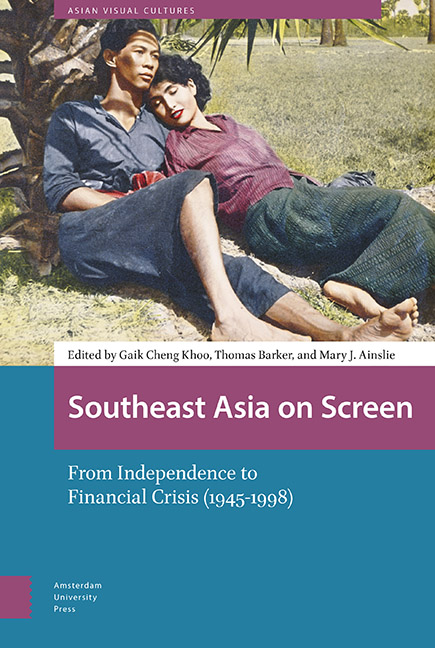Book contents
- Frontmatter
- Contents
- List of Illustrations
- Introduction: Southeast Asia on Screen: From Independence to Financial Crisis (1945–1998)
- Section 1 Independence and Post-World War II Filmmaking: Nation-building, Modernity and Golden Eras
- Section 2 Key Directors
- Section 3 Popular Pleasures
- About the Authors
- Index
9 - Locating Mike de Leon in Philippine Cinema
Published online by Cambridge University Press: 20 November 2020
- Frontmatter
- Contents
- List of Illustrations
- Introduction: Southeast Asia on Screen: From Independence to Financial Crisis (1945–1998)
- Section 1 Independence and Post-World War II Filmmaking: Nation-building, Modernity and Golden Eras
- Section 2 Key Directors
- Section 3 Popular Pleasures
- About the Authors
- Index
Summary
Abstract
Mike de Leon, whose films helped define the ‘second golden age’ (roughly from 1975 to 1984) of Philippine cinema, has been hailed as ‘local cinema's only living film master.’ This essay analyses how the discourse of the golden age came about by interpreting the meaning of De Leon's location in this discourse. Tracing the director's career in chronological fashion, it discusses how his films contributed to a progressive nationalist cinema during the period of martial law under Marcos but also how they increasingly and reflexively interrogated the significance of the golden age in the post-Marcos era. Finally, it evaluates the conceptual boundaries of the golden age through an appreciation of the trajectory of his cinema from 1985 to 1999.
Keywords: Mike de Leon, Philippine cinema, martial law, golden age
Philippine cinema is one hundred years old in 2019, dating from the premiere screening of José Nepomuceno's feature film, Dalagang Bukid (Country Maiden), in Manila in 1919. It would be a few years older, if we are to count other firsts – the production of the first narrative features on national hero José Rizal by Americans in close collaboration with Filipino theatre troupes in 1912; the establishment of the first Filipino-owned film company, Nepomuceno's Malayan Movies, in 1917, 20 years after the arrival of motion picture in Manila; or the shooting and screening in Cebu of the first newsreel by Nepomuceno in 1918. From 1919 onward, film production by native Filipinos like Vicente Salumbides, Carmen Concha and Julian Manansala continued to grow, with silent cinema coming to a close when Nepomuceno produced the first sound film, PUNYAL NA GINTO (Golden Dagger), in 1932.
The coming of sound encouraged the foundation of several film studios, including Filippine Films, Parlatone Hispano-Filipino, Excelsior Pictures and X’Otic Films. After World War II, a more clearly defined studio system emerged and strengthened the film industry by managing their own lots and sound stages, contracting artists, technicians, and publicists, building up their stable of stars and producing genre film staples alongside a few ‘prestige’ projects. Owing mainly to the productions of the ‘big three’ studios (Sampaguita Pictures, Premiere Productions and LVN Pictures), observers marked the decade of the 1950s as the ‘golden age’ of Filipino genre cinema (see Arriola, this volume, Chapter 2).
- Type
- Chapter
- Information
- Southeast Asia on ScreenFrom Independence to Financial Crisis (1945–1998), pp. 193 - 210Publisher: Amsterdam University PressPrint publication year: 2020



